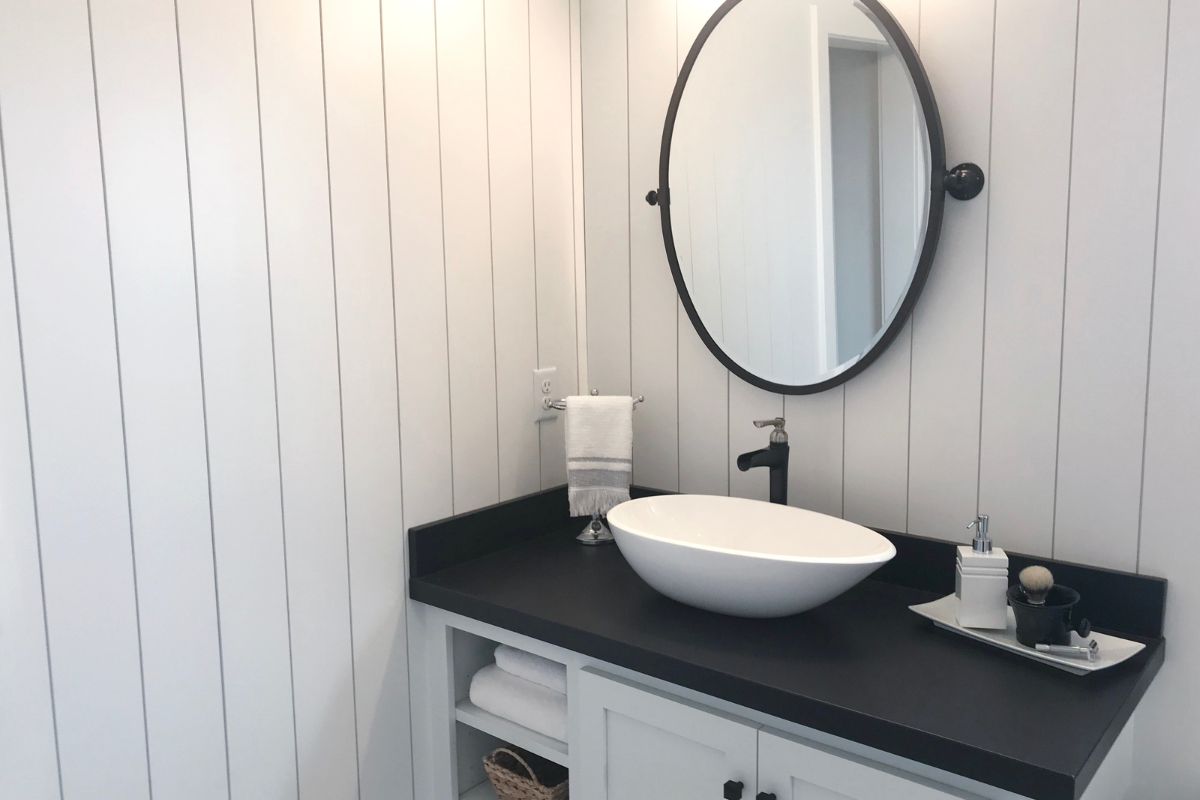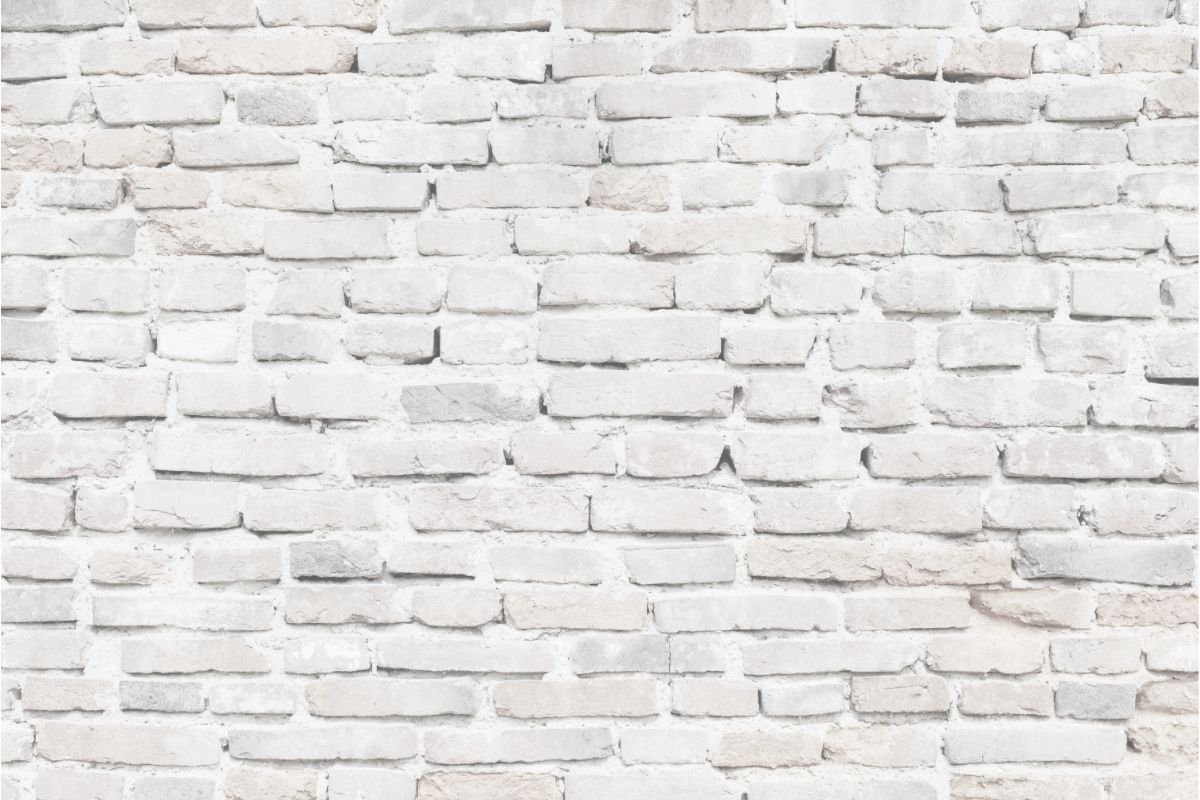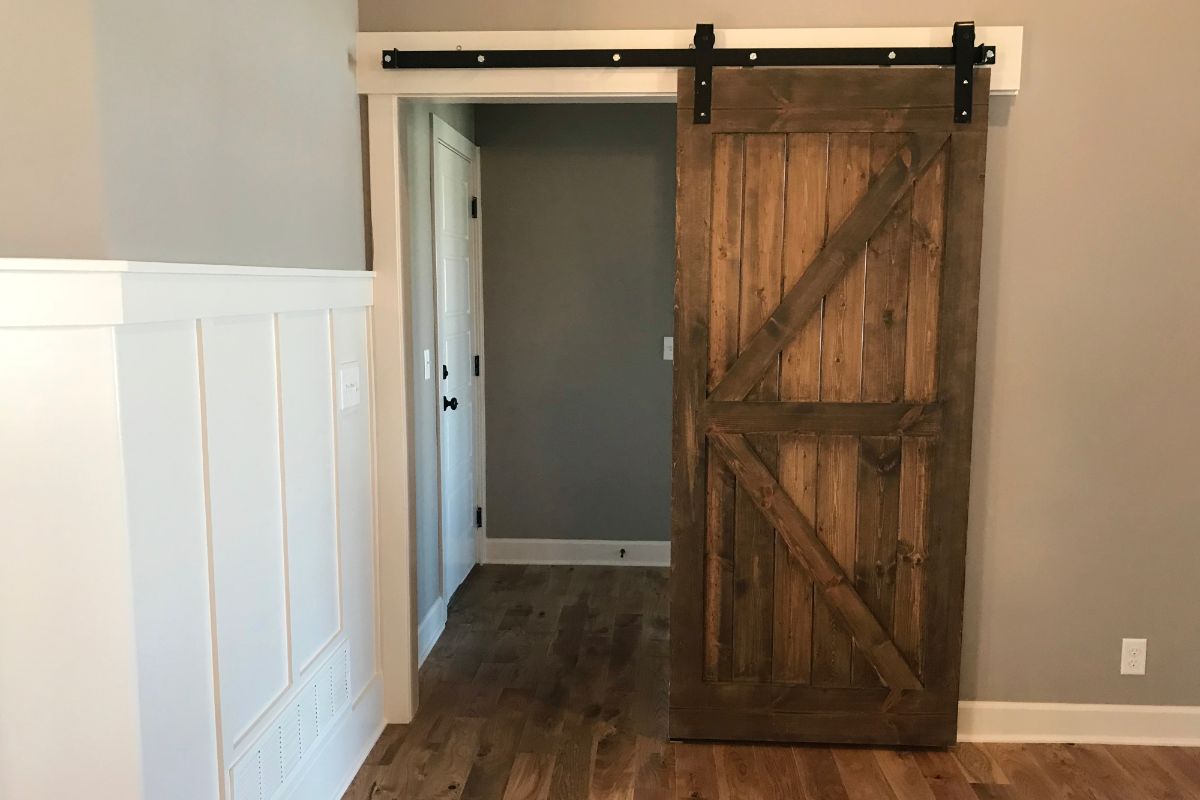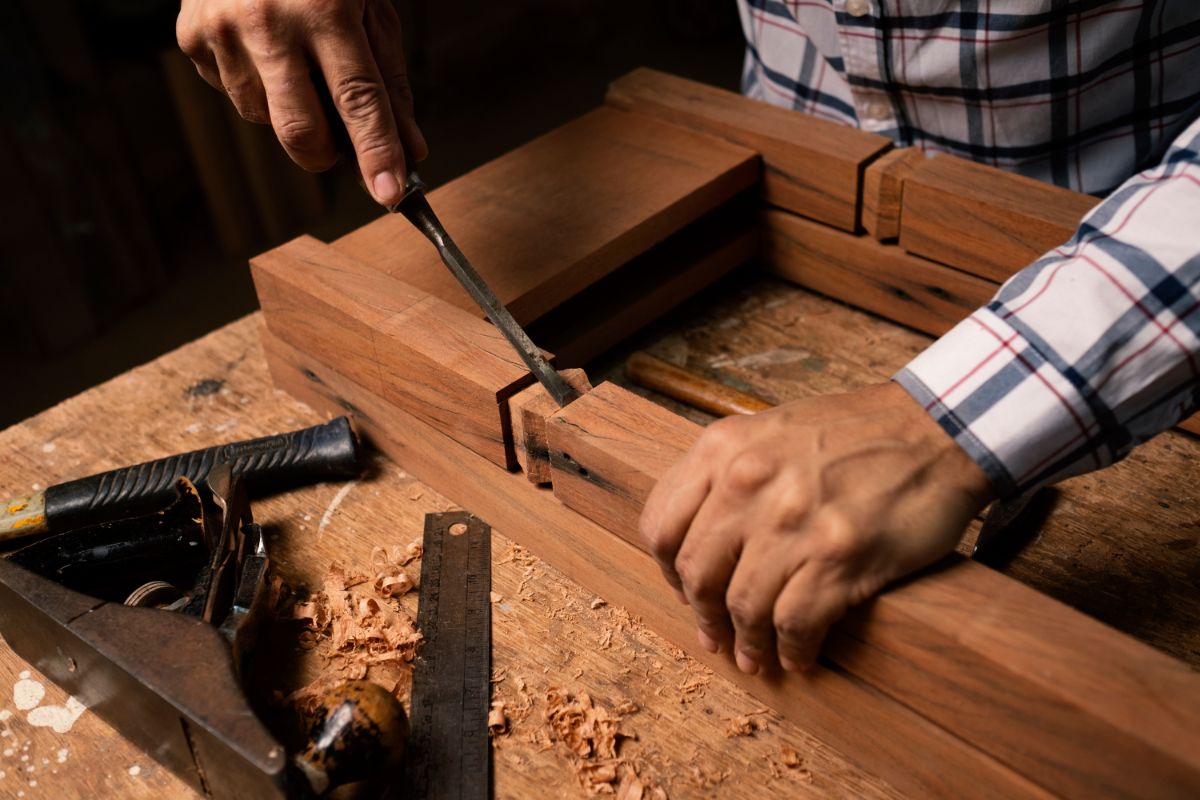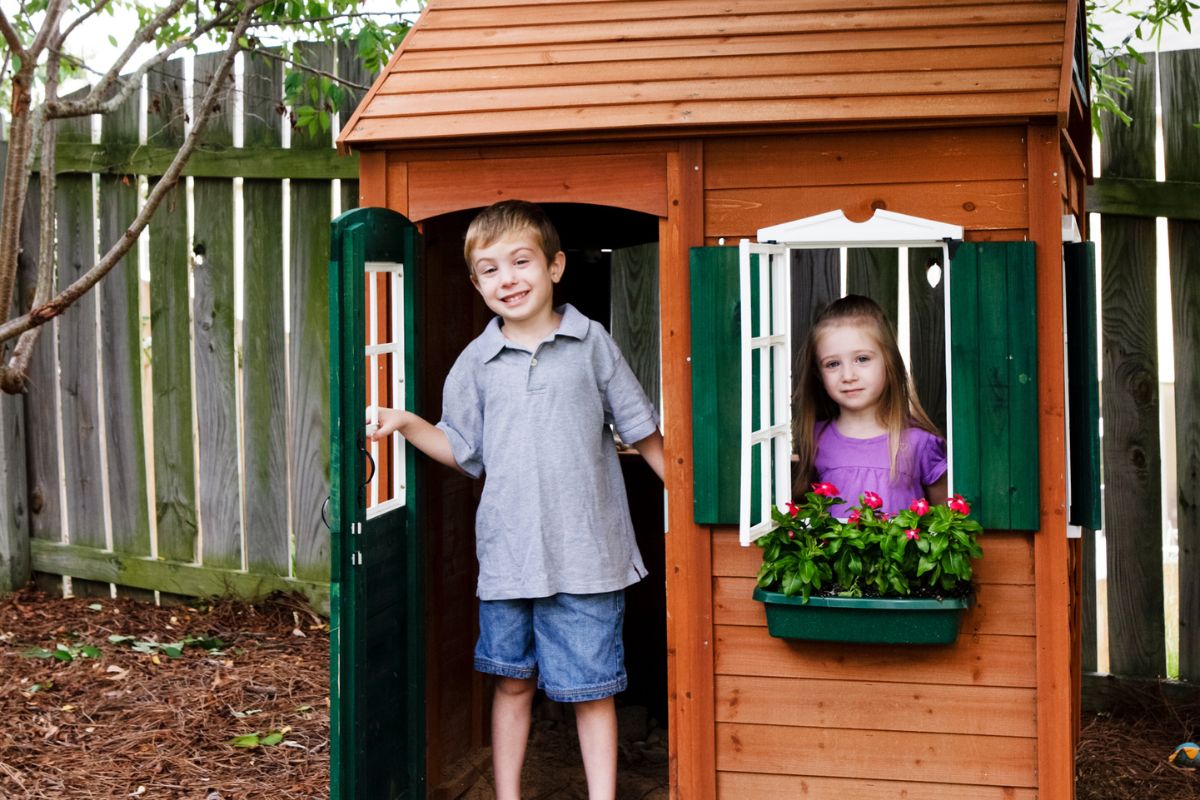Many of us know that it’s incredibly important to locate the stud within a wall before proceeding with any construction, after all they are the key component that allows windows, doors and any interior or exterior finishing to remain stable without peeling off a wall in due time.
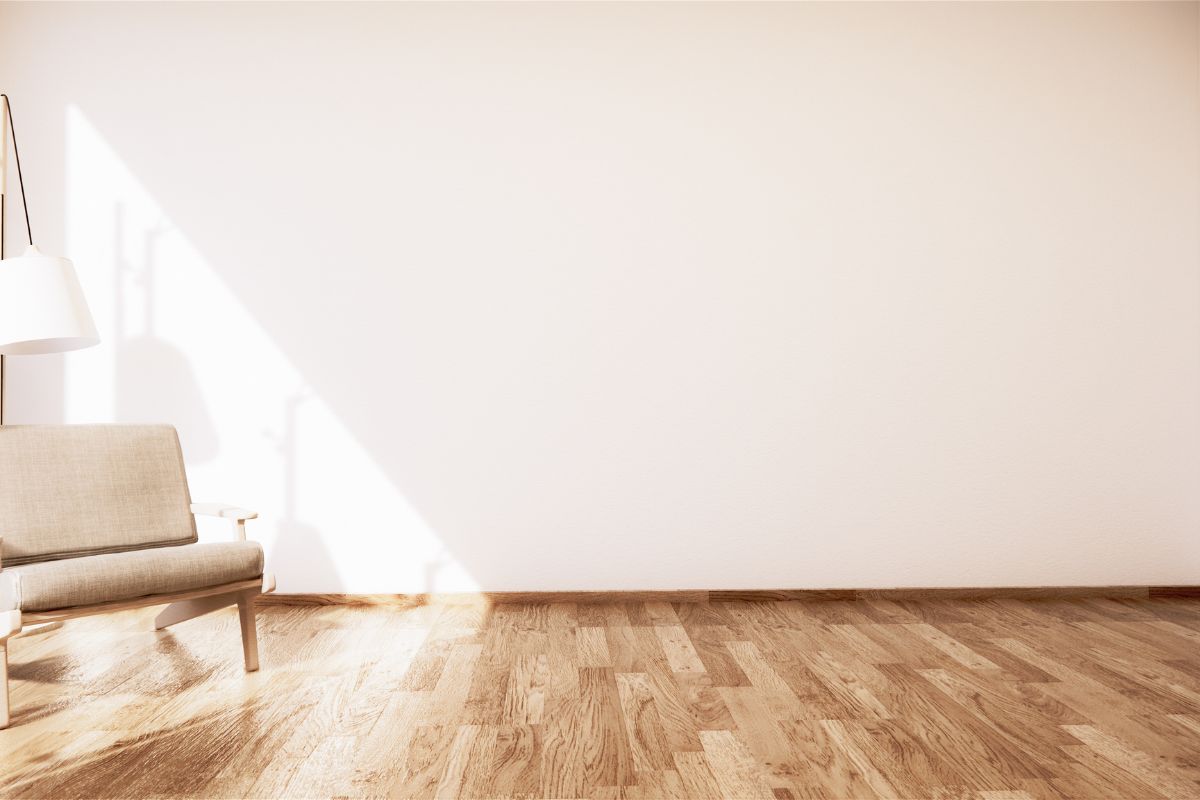
The issue however is when you have a fully finished wall that has been newly painted with maybe some pictures or other decorations around and you need to find the stud which can prove even more difficult when the stud finder is not working as well as it needs to, or you don’t have one at hand.
Luckily, even with a fully finished wall there are still a few ways you can locate a stud quite easily, so that you won’t need to guess where they are for your next installation project.
Why Are Wall Studs So Important?
The reason wall studs are so important, and why it is always a good idea to find one, is because they avoid damage being dealt by heavy objects that you may want to mount on the wall, whether that be a family portrait or a brand new tv.
When you hang these types of objects onto a random part of the wall rather than directly onto a wall stud, the weight can easily pull the nail or hook down which can send the item crashing to the ground while damaging the wall itself in the process.
This is often why electrical boxes or switches will be attached to a stud on the one side so that their weight is supported and they have no danger of falling down.
Once you find the stud, you can drive a nail or screw through it to add some extra security to the object that you are hanging.
Because of this, studs are crucially important not just for mounting heavy objects onto a wall, but even for wall installations such as when using wooden boards so that they won’t fall off or detach over time because of their weight.
Locating a stud is therefore incredibly important when planning to add some extra additions, however if you already have a finished wall with a fresh coat of paint then you understandably won’t want to be rummaging around the interior of the wall to find one since you don’t want to cause any extra damage.
Therefore to make this job easier, here are a few easy methods to find a stud on a finished wall.
Method 1: Find Clues For The Studs Location
Baseboards and electrical outlets will always be attached to the location of a stud so if you know where one is on the wall, you will know exactly where the stud also is.
For baseboards specifically, it can be worth trying to inspect where exactly it was nailed if you have it already attached to the wall, or if you know where it was attached before.
If you manage to find a dimple where the baseboard was, which are usually caulked then painted, measure around 16-inch increments to locate the studs either side of it.
When it comes to electrical outlets, at least one of the sides needs to be mounted onto a stud so to determine which side the stud is on, knock on either side of the switch or outlet and the side that gives back more of a solid and hard sound will be the side with a stud.
Measure approximately ¾ inches away from the outlet on the side with the stud and use this to measure the 16 or 24 inch intervals of stud spacing, since this is how far they will usually always be away from each other.

Method 2: Use Magnets
While this method does work really well and can help you find a stud in little to no time at all, you will need to make sure you have a strong neodymium magnet since weak magnets will struggle to detect any metal through the wall.
With these stronger magnets at the ready, all you need to do is simply move the magnet around the wall in a very slow and gradual manner, going too fast is an easy way to miss out on the screws you are looking for.
You will want to make sure that you are not obstructing the magnet from picking up any connections, so it is always advised to hold the magnets lightly with only your fingertips.
As soon as you get a decent pull from the magnet, you will have found the metal screws used to attach the drywall to the studs. Some magnets will even completely stick to the wall if they are strong enough, making it very easy to find.
Once you have located the screws, either mark it with a pencil or if you don’t want to stain the wall in any way, simply take a photo and edit the picture so that you can show where the stud is, or if the magnets stick you can just leave them there so that you always know where the stud will be.
Method 3: Measure From The Corner
While not all houses and walls are built the same, a general rule of thumb that applies to most walls is that the stud will be 16 inches on center, meaning if you measure 16 inches from the corner of the room, you have a very good chance of easily finding the stud by simply using a tape measure.
Keep in mind this primarily only works when measuring from the corner of the exterior of the house, however because of how easy it is to do, it can be well worth trying before needing to go out to buy other equipment which you may not even need.
To double check, try using the ‘Knock test’ to help determine where the stud might be after you are finished measuring.
Again if you get a solid and slightly firm sound, then you’ve found your stud, however if it’s more hollow then there will be nothing behind the drywall.
Method 4: Use An Electric Razor
This may seem like a slightly strange method, but trust us once you try it, you will realize how easy it really can be to find a stud even when you have a finished wall.
All you need to do is grab an electric razor, this really does not need to be anything fancy so you won’t need to go out and buy a new razor for this to work, any razor that is fully charged and can be switched on and off will work just fine.
Next, turn the razor on and press it gently against the wall until it starts creating a loud, and slightly uncomfortable chattering sound that will be used to detect the stud.
Starting from the left side of the wall, move the razor gradually to the right, the same as you would do when testing with the magnets.
When you cross over a stud, the noise of the razor’s chattering will change drastically, specifically in the pitch which will become much higher.
The way this works is because the stud bay through the wall will act as an amplifier for the sound of the razor so it will therefore alter the sound as soon as the two make close enough contact.
Once you hear the pitch difference, mark down where the stud is on the wall with a pencil, or take a picture of where you were holding the razor when it made a louder noise.

Method 5: Use A Stud Finder App
Nowadays there really is an app for just about anything, and that includes magnetic apps that can easily detect studs through a wall which avoids you needing to make any physical contact with your new and colorful wall entirely.
The way these apps work is by relying on the smartphone’s built-in magnetometer which will pinpoint any metal objects that are inside the wall in a matter of seconds, making for one of the easiest ways to locate a stud.
Method 6: Refer To Earlier Photos
This method is more of a last resort if you are really struggling to find where the stud could be within the wall, however it’s definitely not a bad idea and if you do have some photos handy, it can allow you to locate exactly where it is instantly.
If you had your home built, or if it has just gone through some heavy renovations, you might have some photos that were taken during the process that can show exactly where the studs are without the drywall obstructing it, which can help give you their exact location.
Additionally, if you have any photos of electrical power outlets that may have been removed or painted over, this can also give you a clear indication as to where the studs are.
Pictures are a quick and easy way to always keep track of studs when a wall has been re-decorated, so going forward it is never a bad idea to take pictures of the marked spot where the studs are so that you can be sure to always know their location for future reference.
Frequently Asked Questions
Are Wall Studs Always 16 Inches Apart?
The general spacing for studs will always be 16 inches, however while this is the general rule of thumb, carpenters can only place them here if the wall is exactly some multiple of 16, which many are not.
So that they are not too cramped together, the closest wall studs can often be to each other is 12 inches while the highest they will go to is 24 inches for much bigger walls.
If you’re not sure how far this would be for your specific wall, the easiest way is to start from a corner and measure out 16 inches, and use the ‘knock method’ or magnets to see if you can pick up the stud.
If not, the studs in the wall are probably placed 24 inches apart as this is the next most common distance they will have between each other.
Summary
When you have a wall that has just been finished with a new colorful and vibrant dash of paint, the last thing you want to be doing is digging back through it with a drill just to try and find the studs so that you can put up any extra decorations such as mounted shelves or pictures.
Luckily, it is now easier than ever to find the stud without even requiring a drill at all, so if you are having trouble try out a few of these simple and easy methods that can help you locate the wall studs so that you won’t have to tear down your brand new wall.
- The Woodworkers Guide to Brad Nailers: Everything You Need to Know - September 25, 2023
- How To DIY An Aztec Garden Dining Table [The Easy Way] - October 18, 2022
- Farrow & Ball Pigeon: Is It Right For Your Home? - October 17, 2022

